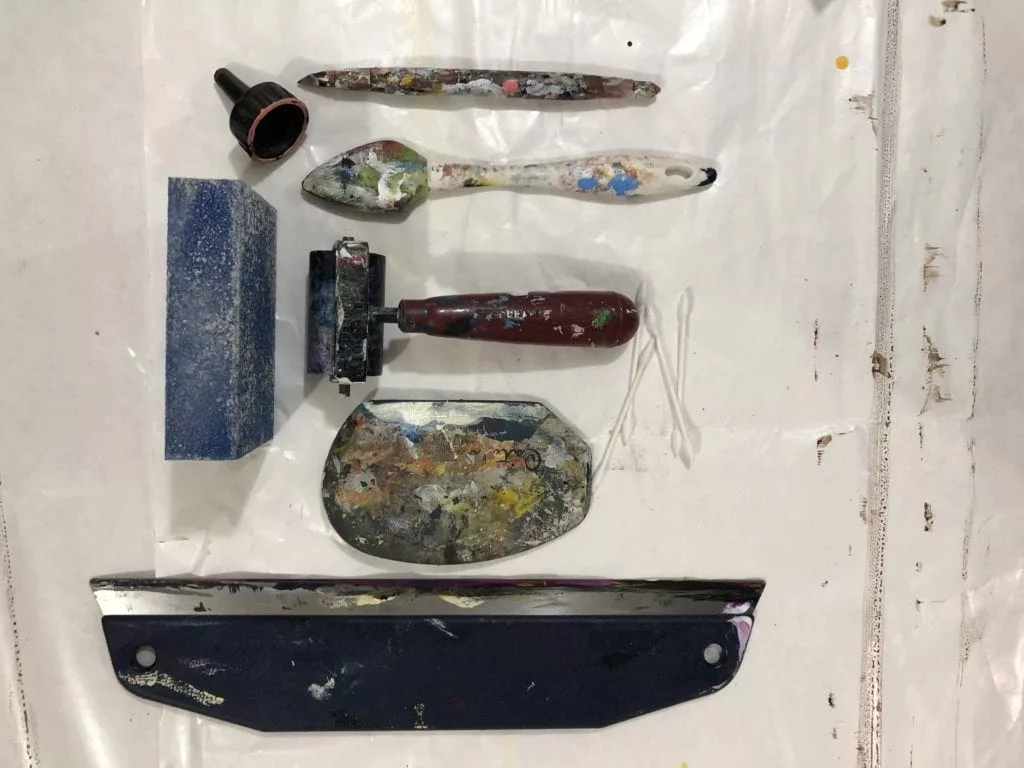August 29, 2019 | Annie Salness | 2 Comments | Uncategorized
One thing I’ve learned from my cousin, Amy Melious, is that there is texture (the look or feel of a surface) in even the more common things. For instance, the last time she visited me, I had these ugly cookie sheets “hidden” in my oven. She found them and decided that they were full of wonderful texture. (who knew?) So she took several pictures of them and then incorporated them into one of her pieces. Look how cool they are!


She sent me the images with this note: “Annie, the first very (fabulously) rustic cookie pan is yours, followed by the two long landscape images I tested it on.”

The original….

With texture added.
I now have a new appreciation for those cookie sheets! Isn’t it great that we can make art and cookies from the very same pans?
Amy says, “My love of photographing textures started long ago as I was ending a ten-year love affair with the Polaroid transfer process in favor of expanding my horizons into digital techniques…Several companies have appeared that sell textures. They can be quick and fun and have a place for sure. I always encourage people to photograph their on textures as well in order to give their pictures more personal meaning and uniqueness.”
Read what Amy has to say about her process.
Just like Amy encourages you to photograph your own textures, I encourage you to use tools and collage to create your own texture in painting.

Persimmon Cookies handwritten recipe
I’ve been exploring paintings with collaging personal handwriting. It gives the paintings meaning something to me, to the client, and it gives me a new texture to respond to.

Collaging personal handwriting gives it more meaning

Annie’s Paint Tools
Here are some tools that I use when I’m painting texture. I use tools from the hardware store, kitchen spatulas, old credit cards, pencils, clay tools, sandpaper, odd circular things, and the list goes on!
You’ll be posting loads of engaging content, so be sure to keep your blog organized with Categories that also allow visitors to explore more of what interests them.

Playing with tools and paint
The BEST thing about these tools is I really don’t know what marks they will make and it gives something to respond to.

My Tool Bag
When I teach a class I always have my students “play” with paint. They can use any color and texture before they start working on their actual painting.

Students playboards
I really want my students to try lots of tools and have fun so they know what feels right—even though using texture might be a new experience, your own expression still comes through the texture. It’s a good warm-up and it takes away some of the angst that happens when you begin a painting.
Design and value (lightness and darkness of a color) are what makes a painting strong. But, you can use texture to convey different feelings— calm, impassioned, light-hearted, luxuriant. It’s an enhancement. It’s a tool. It’s a way to make a piece of art richer. In Amy’s cookie-sheet-texture photo, the texture just makes it look richer and more interesting.
I encourage you to get some tools from your kitchen drawer, in your junk drawer, out in the garage, make a playboard and experiment with texture!






